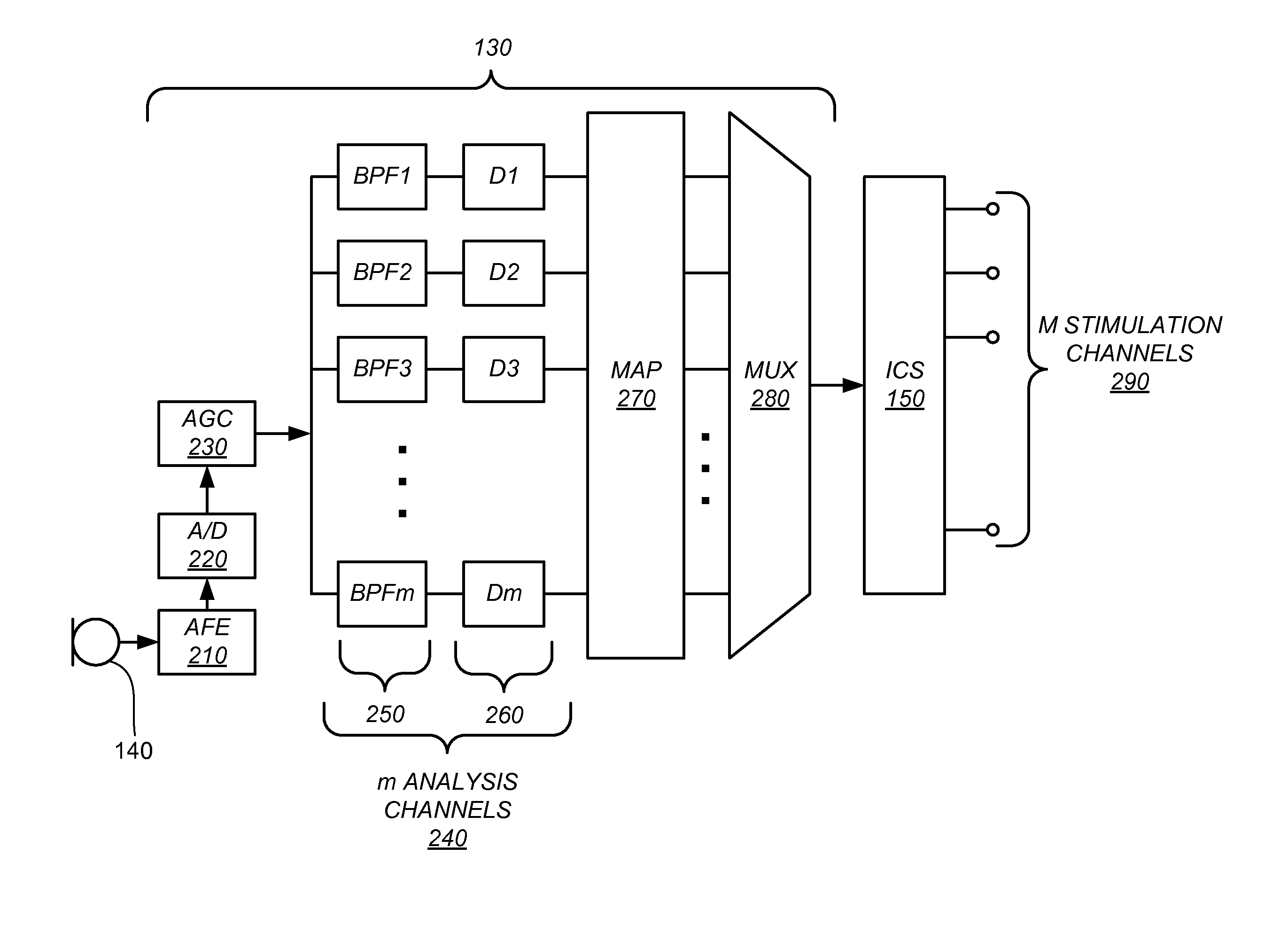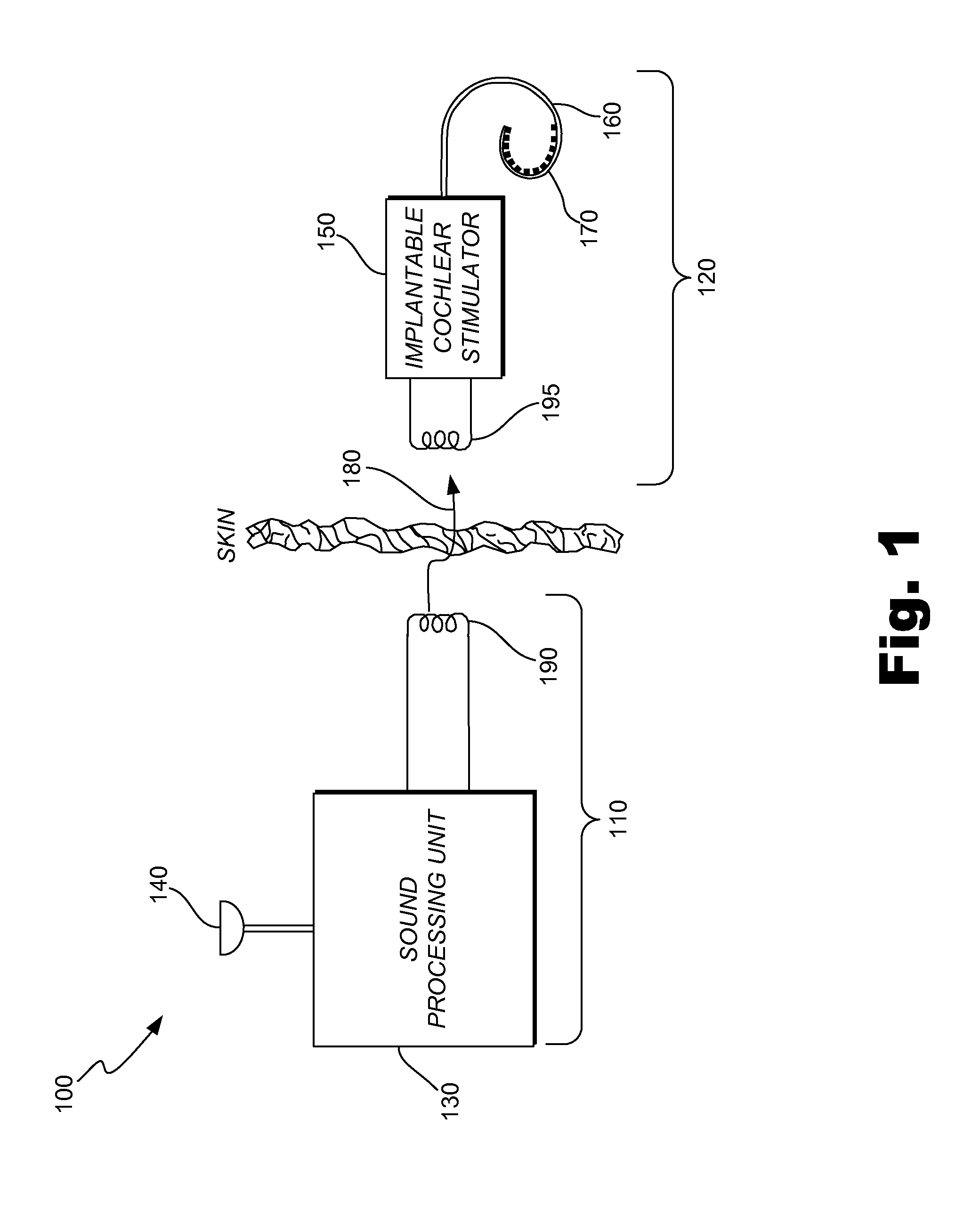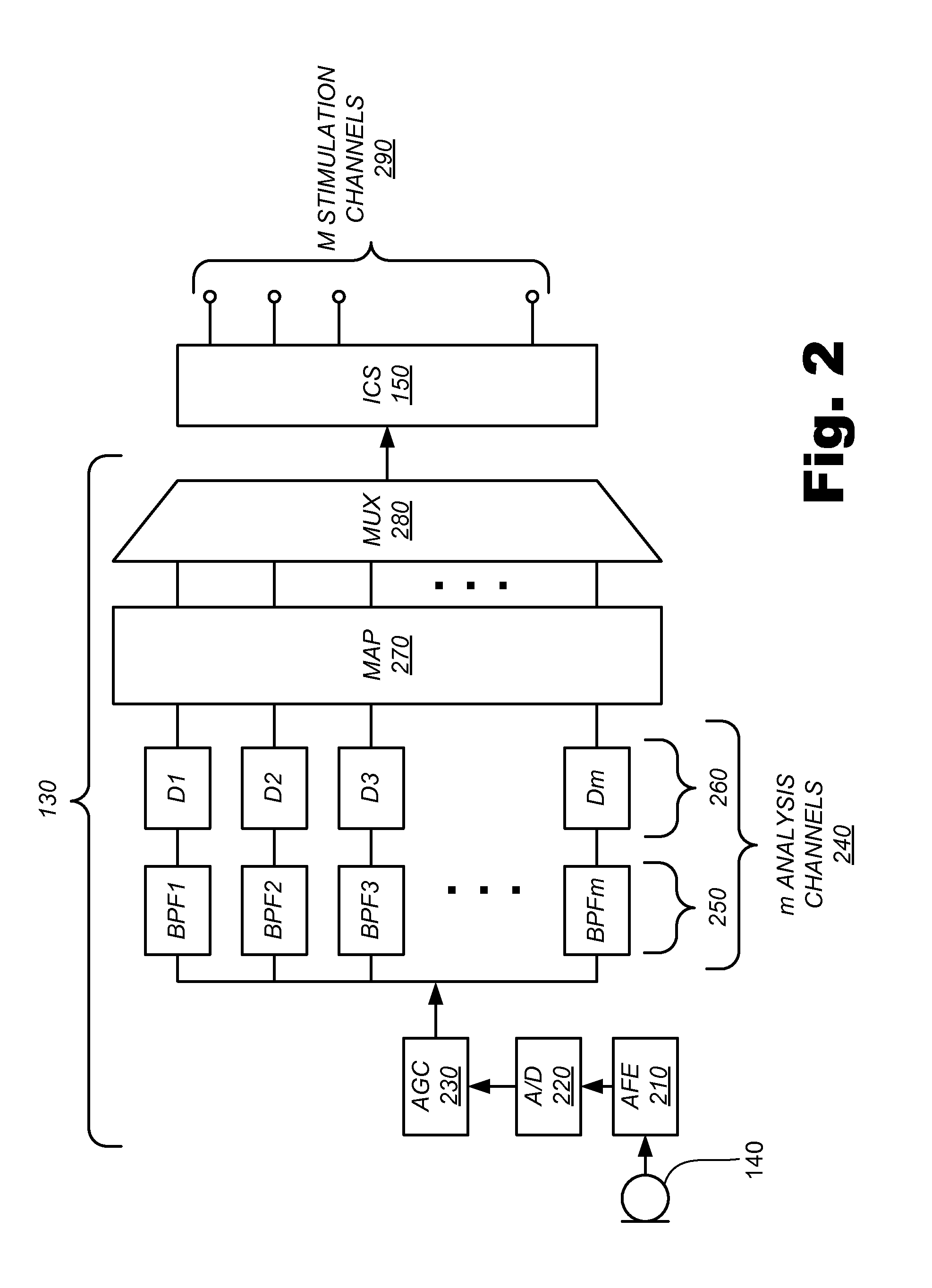Channel-Specific Adjustment of Sound Processing Strategies Based on Electrode Impedance
a technology of electrode impedance and channel specific adjustment, which is applied in the field of channel specific adjustment of sound processing strategies based on electrode impedance, can solve the problems of conductive hearing loss, impeded normal mechanical pathways for sound to reach the hair cells in the cochlea, and impeded sound pathways
- Summary
- Abstract
- Description
- Claims
- Application Information
AI Technical Summary
Benefits of technology
Problems solved by technology
Method used
Image
Examples
Embodiment Construction
[0017]Channel-specific adjustment of sound processing strategies based on electrode impedance is described herein. As will be described in more detail below, a sound processing unit may 1) direct an implantable cochlear stimulator to apply a plurality of stimulation pulses (i.e., a plurality of stimulation current pulses) each having a first pulse width by way of a plurality of electrodes during a first stimulation frame, the plurality of electrodes including a first electrode and a set of remaining electrodes, 2) detect a change in impedance of the first electrode, 3) adjust, in response to the change in impedance of the first electrode, a pulse width parameter associated with the first electrode to define a second pulse width that compensates for the change in impedance of the first electrode, and 4) direct the implantable cochlear stimulator to apply a stimulation pulse having the second pulse width by way of the first electrode and a plurality of stimulation pulses having the fi...
PUM
 Login to View More
Login to View More Abstract
Description
Claims
Application Information
 Login to View More
Login to View More - R&D
- Intellectual Property
- Life Sciences
- Materials
- Tech Scout
- Unparalleled Data Quality
- Higher Quality Content
- 60% Fewer Hallucinations
Browse by: Latest US Patents, China's latest patents, Technical Efficacy Thesaurus, Application Domain, Technology Topic, Popular Technical Reports.
© 2025 PatSnap. All rights reserved.Legal|Privacy policy|Modern Slavery Act Transparency Statement|Sitemap|About US| Contact US: help@patsnap.com



